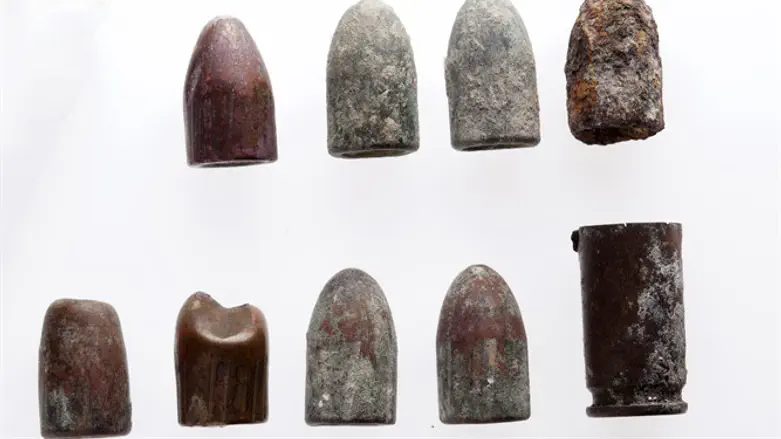
The battle to liberate Jerusalem during the Six Day War focused on the Temple Mount, the holiest site in Judaism. The entire Jewish world heard when Colonel Mordechai “Motta” Gur, the commander of the Paratroopers Brigade which captured the Old City of Jerusalem announced that "The Temple Mount is in our hands" over the radio.
The Temple Mount Sifting Project has continuously found evidence of the battle for the Temple Mount during the Six Day War, the project announced in a press release Tuesday.
The Islamic Waqf illegally removed 400 truckloads of soil containing innumerable archaeological artifacts from the Temple Mount in 1999 and dumped the soil outside the Old City with no regard for the artifacts within.
The Temple Mount Sifting Project was established to go through the soil to find and save the treasures the Waqf had thrown away. Over the years it has unearthed thousands of artifacts dating back millennia, including seals of ancient Jewish officials, ancient coins, and the bones of animals sacrificed in the Holy Temple.
Among the artifacts from the Six Day War which were found by the Temple Mount Sifting Project is a 25 round magazine of an Israeli-made Uzi sub-machine gun, which served as the personal weapon of every IDF commander at the time. There are also several 9mm bullets – the Uzi’s ammunition. A number of 9mm bullet casings were found as well. One casing, which was produced abroad, has a manufacture date of 1956. Another 9mm casing was manufactured in 1952 and has the Hebrew letters “MIT,” which is an acronym for the State of Israel, Military Industry. These bullets and casings attest to the fact that during the Six-Day War antiquated ammunition was used. In addition, a 7.62mm blank cartridge with a headstamp date of 1957 was found. This round was probably used for firing an anti-tank grenade from a Belgian made Fal or “FN” rifle which was commonly in service of the IDF during this period. Among the ammunition that was found were two 50-caliber projectiles probably fired from a Browning heavy machine gun. The bullet tips are warped indicating that they hit a hard surface. It is likely that these bullets originated in the return fire of the IDF soldiers pinned down on the Kidron Bridge shooting at the Jordanians positioned on the Eastern wall of the Temple Mount.
The project also found coins which were minted in 1967 and 1968, and may have fallen out of the pockets of soldiers and visitors to the holy site in the years immediately following the Six Day War.
The project announced the findings on the eve of the 50th anniversary of the reunification of Jerusalem and the return of the Jewish people to the holy sites of the Old City and the City of David
